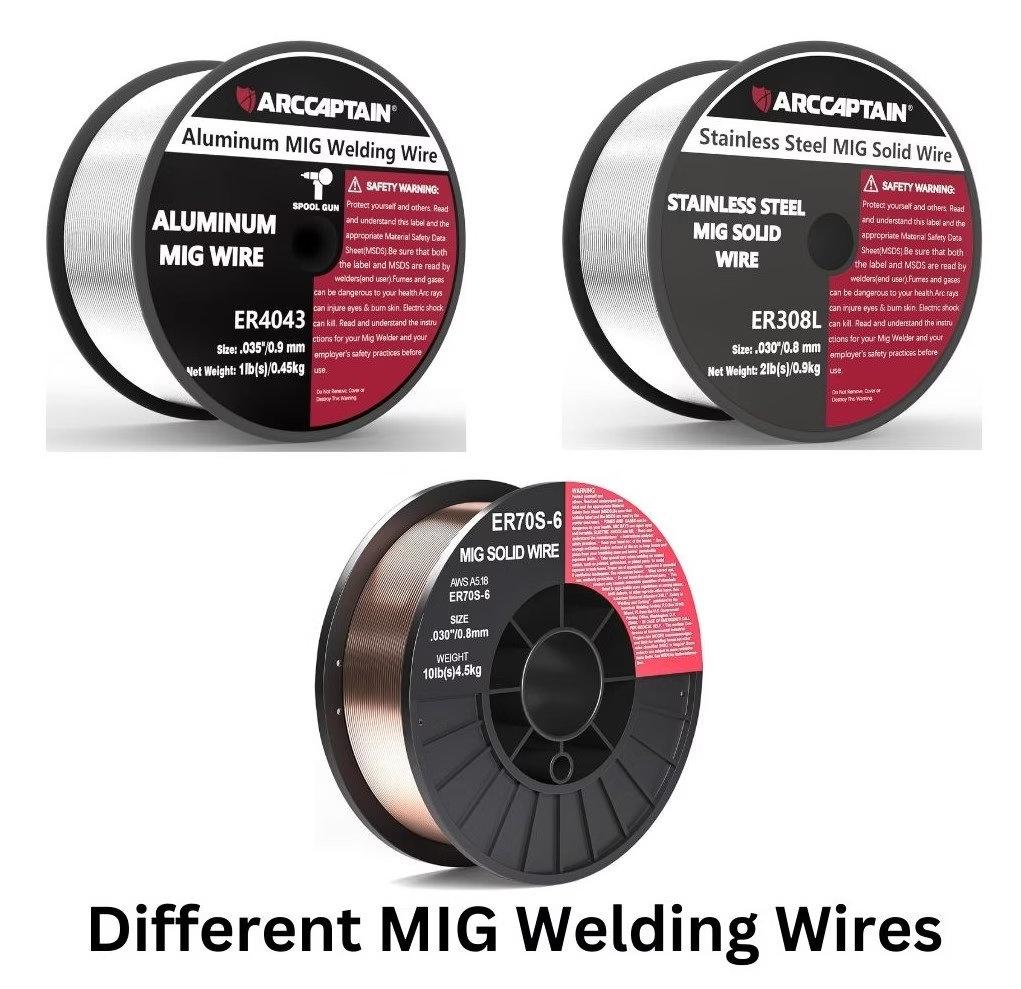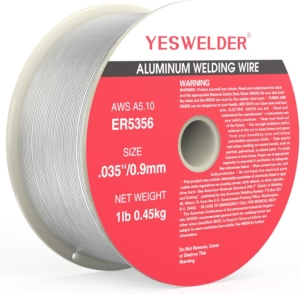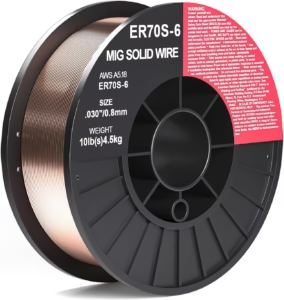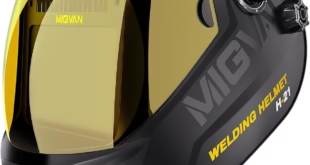Introduction to Different Types of MIG Welding Wires
MIG (Metal Inert Gas) welding, also known as GMAW (Gas Metal Arc Welding), is a widely used welding process due to its efficiency and versatility. It involves a continuous wire feed and an inert gas to shield the arc. The choice of MIG welding wires is crucial as it directly affects the weld’s strength, appearance, and durability.
Classification of MIG Welding Wires
MIG welding wires are broadly classified into three main categories: solid wires, flux-core wires, and metal-cored wires. Each type has its unique characteristics and applications.

Solid MIG Welding Wires
Solid wires are the most common type used in MIG welding. They are made from a single metal alloy and are known for producing clean, smooth welds.
Composition and Characteristics
Solid wires are typically made from a single metal alloy, which provides consistent weld properties. They require an external shielding gas, such as argon or a mix of argon and carbon dioxide, to protect the weld area from atmospheric gases.
Common Types
ER70S-6: This is one of the most widely used solid wires for welding carbon steel. It offers excellent strength and is suitable for most general fabrication tasks.
ER308L: Used for welding stainless steel, this wire provides corrosion resistance and is often used in food processing equipment and medical devices.
ER4043: A popular choice for aluminum welding, known for its ease of use and smooth welds.
Applications and Materials
Solid wires are ideal for welding thin materials and are commonly used in automotive repairs, robotics, and general fabrication. They work well on flat, horizontal, and vertical positions but may require additional support for overhead welding.
Flux-Core MIG Welding Wires
Flux-core wires contain a flux core within the wire, which provides shielding gas when melted. This makes them suitable for outdoor or windy conditions where maintaining a consistent external shielding gas flow can be challenging.
Composition and Characteristics
The flux core in these wires generates a shielding gas when heated, eliminating the need for an external gas supply. This feature makes flux-core wires versatile and convenient for fieldwork.
Common Types
E71T-1C: A self-shielding flux-core wire used for welding carbon steel. It’s popular in construction and repair work due to its ease of use in various environments.
Applications and Materials
Flux-core wires are ideal for structural steel fabrication and heavy equipment repair. They are particularly useful in situations where using an external shielding gas is impractical.
Metal-Cored MIG Welding Wires
Metal-cored wires have a tubular design with a metal sheath and core materials. They offer high deposition rates, low spatter levels, and smooth arc transfer.
Composition and Characteristics
These wires combine the benefits of solid and flux-core wires, providing excellent weld penetration and minimal slag. They require an external shielding gas but offer superior weld quality.
Common Types
E70C-6M: Known for its high deposition rates and low spatter, this wire is ideal for welding thicker materials and is often used in heavy fabrication.
Applications and Materials
Metal-cored wires are best suited for welding thicker materials and are commonly used in shipbuilding and heavy machinery fabrication. They work well in all positions but are particularly effective in flat and horizontal positions.
Specialized MIG Welding Wires
Beyond the standard types, there are specialized wires designed for specific materials and applications.
Aluminum MIG Wires
Aluminum wires are formulated to match the properties of aluminum alloys, ensuring strong and durable welds.
ER4043: Known for its ease of use and smooth welds, this wire is a popular choice for general aluminum welding.
ER5356: Offers higher strength and is often used for welding thicker aluminum sections.

Stainless Steel MIG Wires
Stainless steel wires are designed for welding stainless steel alloys, providing corrosion resistance and durability.
ER308L: Used for welding 304 stainless steel, it offers excellent corrosion resistance and is commonly used in food processing and medical equipment.
ER316: Similar to ER308L but with added molybdenum for enhanced corrosion resistance, particularly in marine environments.
Nickel Alloy Wires
Nickel alloy wires are used for welding nickel alloys and overlays, providing high strength and resistance to corrosion and heat.
AWS Classification System
The American Welding Society (AWS) provides a classification system for MIG welding wires, which helps in selecting the appropriate wire based on mechanical and chemical properties. For example, ER70S-6 indicates a solid wire with a tensile strength of 70,000 psi and specific chemical composition.
Understanding these classifications is crucial for ensuring that your weld meets the required specifications and standards.
Choosing the Right MIG Wire
Choosing the right MIG wire involves considering several factors:
Material: Ensure the wire is compatible with the base metal.
Position: Different wires perform better in different welding positions.
Thickness: Thicker materials may require wires with higher deposition rates.
For most beginners, starting with solid wires like ER70S-6 for carbon steel or ER4043 for aluminum is recommended. These are versatile and easy to work with.
Welding Positions and Techniques
Welding positions can significantly affect the quality of your weld. Here’s a brief overview of common positions and techniques:
Flat Position: Ideal for beginners, this position allows for easy control and visibility.
Horizontal Position: Requires more skill but is essential for welding long seams.
Vertical Position: Challenging due to gravity’s effect on the weld pool; use a slower travel speed.
Overhead Position: The most difficult position, requiring precise control and often additional support.
Techniques vary based on the position and wire type. For instance, using a push technique with solid wires can help control the weld pool better.
FAQs
What is the difference between ER70S-6 and ER70S-3 MIG wires?
ER70S-6 is more commonly used due to its smoother arc and better weld appearance, while ER70S-3 is known for its higher manganese content, which can improve weld strength in certain applications.
Can I use flux-core wire for welding aluminum?
No, flux-core wires are not suitable for welding aluminum. For aluminum, you should use wires specifically designed for aluminum, such as ER4043 or ER5356.
How do I choose the right shielding gas for MIG welding?
The choice of shielding gas depends on the material being welded. For example, a mix of argon and CO2 is common for carbon steel, while pure argon is often used for aluminum and stainless steel.
What are the advantages of metal-cored wires over solid wires?
Metal-cored wires offer higher deposition rates and less spatter compared to solid wires, making them ideal for thicker materials and high-production environments.
Can I use MIG welding for welding cast iron?
While MIG welding can be used for cast iron, it’s not the most common method. Specialized cast iron wires and techniques are recommended to achieve strong welds.
Conclusion
Mastering MIG welding involves understanding the different types of MIG welding wires available and how to choose the right one for your project. Whether you’re working with solid, flux-core, or metal-cored wires, each has its unique benefits and applications. By considering factors like material, position, and thickness, you can achieve strong, clean welds that meet your project’s requirements.
 Welding of Welders All about Welding and Welders
Welding of Welders All about Welding and Welders






